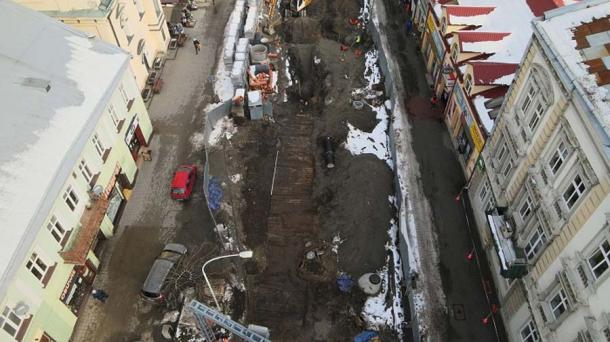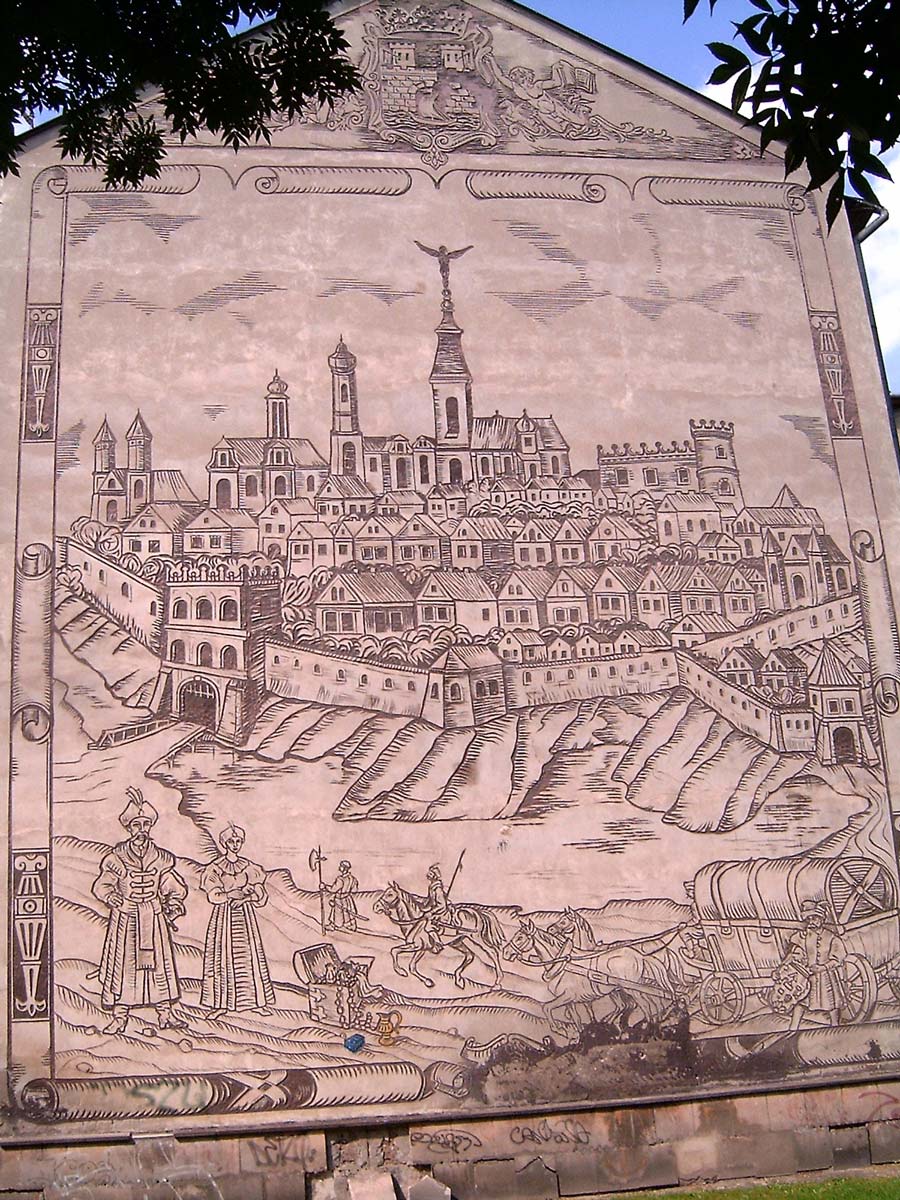Jaroslaw, a town in south-east Poland, developed as an important trade center in the 16th and 17th centuries and now an amazing ancient wooden road (one of the longest in Poland) has been unearthed in the town center. Trade routes from Jaroslaw were established with Silesia, Gdansk and Hungary, and goods came from as far away as Spain, England, Finland, Armenia and Persia. Jaroslaw is rich in ancient culture and history. The old Polish wooden road was discovered during a public sewage works construction project in the very heart of the old town center.
The unique and well-preserved Polish wooden road section was 30 meters (98.4 feet) in length and almost 3 meters (9.84 feet) in width. The section connected to Jaroslaw’s historic main town gate, and from there the road connected the town to the seminally important cities of Krakow and Rzeszow.
Archaeologist Katarzyna Oleszek told Science in Poland , “So far, we have managed to unveil a wooden road with a length of 30 meters. However, we know that it was certainly longer by another several dozen meters, because we encountered several more fragments.”

The section of the wooden road in the central historical district of Jaroslaw, Poland during the excavations (K. Oleszek / Nakau W Polsce )
One of Poland’s Longest Wooden Road Remnants: the Evidence
The discovery has been dated to the 18 th century and represents one of the biggest wooden road finds in Poland, according to Ms. Oleszek. Its width suggests that it was a one-way carriage system for those passing through the town, as two carriages could definitely not pass each other at the same time. Parts of the road have been removed for preservation, which led to the discovery of remnants of a 14th century hardened earth road!
The newly discovered Polish wooden road itself consisted of a load-bearing structure with “three wooden joists arranged transversely to the beams that were connected with pegs,” according to Heritage Daily . Interestingly, laser scanning technology was used to increase measurement accuracy. “Thanks to the use of this technology, we have documented this monument with an accuracy of one millimeter,” Ms. Oleszek added.
She continued, “There are no traces of hooves on the road or carriages grooves that ran along it, which means that the wood used for its construction – probably oak – was very durable. Additionally – as the research shows – traces of repairs are visible in several places, which proves that there was regular road works.”
Jaroslaw’s importance as a trade route center meant that it hosted annual fairs, some were the largest in Europe in the 17th century. These were attended by populations of close to 30,000 people, who were involved in the trade of commodities like wine, leather, and cloth.
The road was constructed with a 100-year timeline in mind, according to Ms. Oleszek. As of now, parts of the road have been dug up and preserved for conservation. The wooden road section will soon be on public display in the central part of Jaroslaw.
Coins, fragments of shoe soles and nails have been discovered in the space between the wooden road and the 14th century harder paved road, which will go on display in the town’s museum.

A historical sketch of Jaroslaw, showing where wooden roads exited the city gates at two locations. (Mcdrwal / CC BY 3.0 )
European Wooden Roadways: Strong Enough But Not Forever
In Europe, the practice of building wooden roadways has been common since ancient times. Initially they were built to facilitate foot traffic for those crossing impossible terrains, like marshes, wetlands and bogs .
Later, wooden roads were constructed to accommodate animal-driven carriages and wagons. There was a sense of interconnectedness between a lot of these wooden roads, allowing passage from the countryside to towns, resulting in an entire network of people on the move for trade and daily life.
Over time, disuse and disrepair, and the unpredictable nature of the bogs meant that these wooden roads were discarded and swallowed up by nature. Incidentally, they have been preserved by the unique chemical composition of bogs and have become important architectural artifacts.
The southern Baltic region , along with Northern Europe, England and Ireland are renowned for these wooden roads, but they are also scattered across most major European countries including Spain, France, Germany and Italy.
Wooden roads required high levels of craftsmanship and skill to make, especially since no blueprints existed for projects of this kind way back in time. The absence of “high technology” also meant that it was an entirely manual job. But the work needed to be precise as certain terrains were so precariously volatile. Since transportation methods were not well developed hundreds of years ago, it was an extremely challenging and arduous task to carry logs of wood to places where there were no road networks.
Top image: A closeup of the section of the wooden road unearthed in the heart of Jaroslaw, Poland during the excavations. Source: K. Oleszek / Nakau W Polsce
By Rudra Bhushan
Related posts:
Views: 0
 RSS Feed
RSS Feed
















 June 11th, 2021
June 11th, 2021  Awake Goy
Awake Goy  Posted in
Posted in  Tags:
Tags: 
















